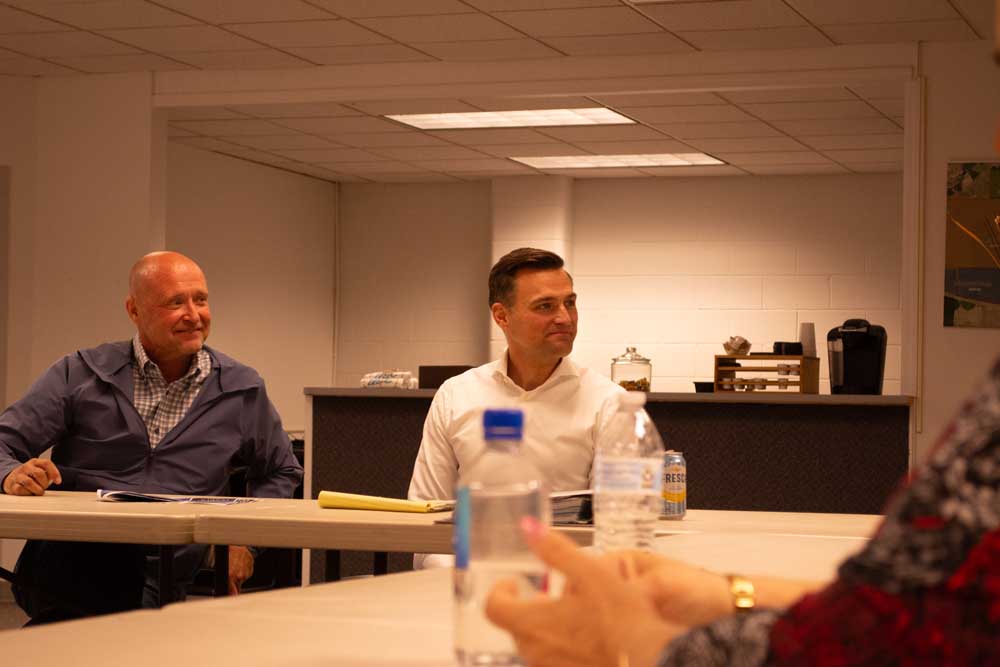Capital Chatter: Measure 110 reforms for naught without accountability — even for us
Published 4:00 pm Thursday, March 7, 2024

- capital chatter logo
No one knew about my adolescent attempt at suicide. Not my family. Not my friends.
Trending
Not for decades.
Not even the guy driving the speeding muscle car down busy Blue Lakes Boulevard, whose NASCAR-like skills foiled my spur-of-the-moment decision to end my loneliness. At what I calculated to be the last second, I abruptly veered my bicycle into the car’s path. But the driver outsmarted me. He executed a screeching turn, leaped from the vehicle and screamed at me for not paying attention. Ignoring him, I rode away.
This incident came to mind as lawmakers worked through what would become House Bill 4002, their attempt to rework Measure 110 and confront Oregon’s drug abuse epidemic.
Trending
Mental illness and drug use are often connected, although that wasn’t true for me. I self-medicated with coffee. (Caffeine is a stimulant. By college, I was drinking 10-15 cups a night. In retrospect, I probably suffered from caffeine-induced anxiety and sleep disorders, along with my depression. I now avoid caffeine.)
Still, I think my experience offers an important corollary: All the good intentions built into HB 4002 will be for naught if individual Oregonians don’t step forth to help one another – and to be accountable themselves as parents, neighbors and colleagues. I’m alive today because of other youth and adults – Bernie Turner, Jim Gentry, Chuck Graves, Mrs. Abernethy and others – in whom I could trust.
This year’s legislative players did a masterful job of give and take in producing HB 4002 – what House Speaker Dan Rayfield, D-Corvallis, described as thinking outside the box. They achieved a politically palatable compromise.
Entering the legislative session, Senate Republican Leader Tim Knopp of Bend saw little chance that would happen. But in the end, he said, the final version of HB 4002 was better than simply repealing Measure 110. He and Rayfield were among 72 legislators backing the bill. Only 15 voted no.
“We have a lot of work ahead of us, but I feel good that we’re all in this together,” Rep. Jason Kropf, D-Bend, told me this week. He co-chairs the Joint Committee on Addiction and Community Safety Response.
“It’s a shared responsibility, right? It is about, how do you provide a level of coordination and connection with all the different parts? It’s law enforcement working with behavioral health folks. It is cities and counties working with the state. It’s our nonprofit treatment providers working with their county behavioral health programs and being supported on the state level.
“And then it’s also being able to dive into the data. What’s working? What’s not working? What’s the best use of funds?”
On a micro level, it’s also about being tuned into family members and other associates. My parents never knew of my suicide attempt and the depth of my depression. Neither did my brother until a conversation we had while traveling together last summer. As kids, he and I had quickly realized, “Never tell Mom or Dad anything.” Our parents would overreact instead of being inquisitive listeners.
Had I been drinking or using drugs, my persuasive prevarications likely would have prevailed with Mom and Dad. Many parents can’t conceive of their offspring misleading them – or outright lying.
Yet children and youth today face even greater pressures: Cheap, readily available, powerful drugs. Cyberbullying and social media. Worries about everything from school shootings to global climate change to homelessness afflicting themselves and others. Even the threat of nuclear war has made a comeback.
In a 2018 Oregon survey, high schoolers identified lack of access to mental health services as their top concern. Then along came the pandemic, whose resulting school closures made things worse. The feds provided temporary money to add behavioral health specialists, but many of those personnel are disappearing as the dollars run dry.
“Suicide remains the second-leading cause of death among people ages five to 24,” according to the Oregon Health Authority. “[T]he number of deaths by suicide for youth identified as white have fallen. Yet the number of suicides for youth of other races and ethnicities remain at or above 2018 levels.”
School counselors tell me of fourth-graders who have made suicide plans.
And nationally, drug overdoses and poisonings are the third-leading cause of pediatric deaths, pediatrician Lisa Reynolds told the Addiction and Community Safety Response Committee in January.
Rep. Reynolds, D-Beaverton, said society has become “somewhat permissive” in our approach to drug use and abuse.
Marijuana, more potent than in the past, is clearly a gateway drug now. Those users are more likely to escalate to opioids, Reynolds said. Although some people do use drugs without becoming addicted, 90% of adults with substance use disorder started using drugs as youths.
“I’m guided by two principles in policy and in medicine,” she told the committee meeting in the Oregon Capitol. “One is that children and youth are not little adults. They need tailored responses to the problems we address here in this building and in the state.
“And Number 2, interventions have a better chance of success the earlier they are implemented.”
HB 4002 and related measures that lawmakers sent to Gov. Tina Kotek will provide more treatment and prevention, including improved school curricula on the dangers of opioids.
But not enough. Lawmakers say prevention and youth behavioral health programs will be a focus for the 2025 Legislature.
“I would have liked to have seen a lot more focus on prevention,” Sen. Fred Girod, R-Lyons, said on Feb. 27 as the committee prepared to pass the revised bill. “I think we can talk about people with drug addiction all you want, but I really want to prevent people from going down that road in the first place. And I think you do that by really giving kids an opportunity.”
Added fellow committee member Rep. Tawna Sanchez, D-Portland, who co-chairs the Legislature’s budget committee: “We as a state have disinvested in this, the issue of addiction and mental health services – and housing – for a very, very long time.
“We have caused this problem ourselves.”




